Anthony Muto was a visionary American fashion designer whose legacy spans decades of elegant, timeless fashion. Born in Chicago in 1934, Muto grew up surrounded by the craft of tailoring, learning the trade from his grandfather and mother. His early exposure to clothing construction laid the foundation for a career marked by both artistic creativity and technical precision. After studying at the Chicago Academy of Fine Arts and gaining experience in European fashion, Muto returned to the U.S. to make his mark on the industry. His designs, known for their blend of sophistication and wearability, garnered widespread acclaim, especially among prominent figures like First Ladies Lady Bird Johnson, Rosalynn Carter, and Barbara Bush.
In 1971, Muto launched his own label, *Marita by Anthony Muto*, which embodied his philosophy of creating clothing that transcended fleeting fashion trends. He aimed to design pieces that could last, both in quality and style, emphasizing the importance of longevity in fashion at a time when the “throw-away” culture was beginning to take root. This focus on sustainable, timeless fashion helped Muto stand out in a competitive industry, with his relaxed, yet luxurious evening wear becoming a hallmark of his brand. His work was not just functional but innovative, often experimenting with draping and versatile designs that could be styled in multiple ways.
Muto’s contributions to fashion extended beyond his own labels, as he collaborated with brands such as Joan Raines and Saz, while his collections became a fixture in renowned museums like the Metropolitan Museum of Art. His meticulous craftsmanship and attention to detail made his clothing not only fashionable but truly collectible, embodying a classic elegance that has made Anthony Muto’s pieces highly sought-after in the vintage market today.
60s Fashion in London’s King Street
How to tell if Anthony Muto is vintage from the logo
Anthony Muto, known for his timeless and elegant designs, used distinctive logos that evolved over time, helping identify the era a specific item came from. His logos, though minimal, changed slightly in design, font, and presentation. This guide will help identify Anthony Muto’s vintage clothing by analyzing the logos from different eras.
1960s to 1970s Anthony Muto logo
- The early Anthony Muto logo from the 1960s to 1970s featured a simple, serif font.
- The letters are spaced tightly, with a slightly narrower look compared to later designs.
- This logo was often embroidered on clothing, giving it a classic, clean look.

1960s to 1970s Anthony Muto logo
1980s Anthony Muto logo
- In the 1980s, Anthony Muto updated the logo, using a more condensed and modernized version of the font.
- The typography became narrower, with elongated letters, which were slightly bolder than the previous design.
- Though still minimalist, this version has a more contemporary appearance, suitable for the evolving fashion trends of the time.
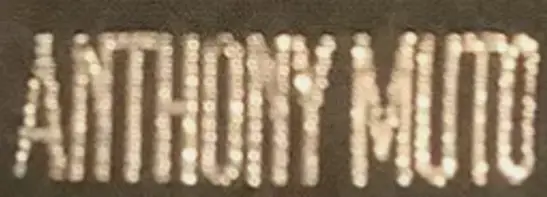
1980s Anthony Muto logo
How to tell if Anthony Muto is vintage from the tags
Anthony Muto, a renowned designer, saw his clothing labels evolve significantly over the decades. His designs from the 1960s to the 1980s featured distinct label styles that helped define the fashion of each era. From simple, minimalist tags to more intricate designs that reflect his collaborations and specific collections, understanding the evolution of Anthony Muto tags can help determine the authenticity and vintage nature of a garment.
Can’t figure out your vintage tags or labels? Upload a picture on our vintage tag identification page, and we’ll assist you!
1960s vintage Anthony Muto tags
- Tags from this era prominently feature “Anthony Muto” in bold lettering.
- Often showcases a clean, monochrome design with minimal embellishments.
- Some labels include additional descriptors such as “FOR MOROCI” indicating collaborations or specific collections.
- The use of black backgrounds with white or silver text was common.
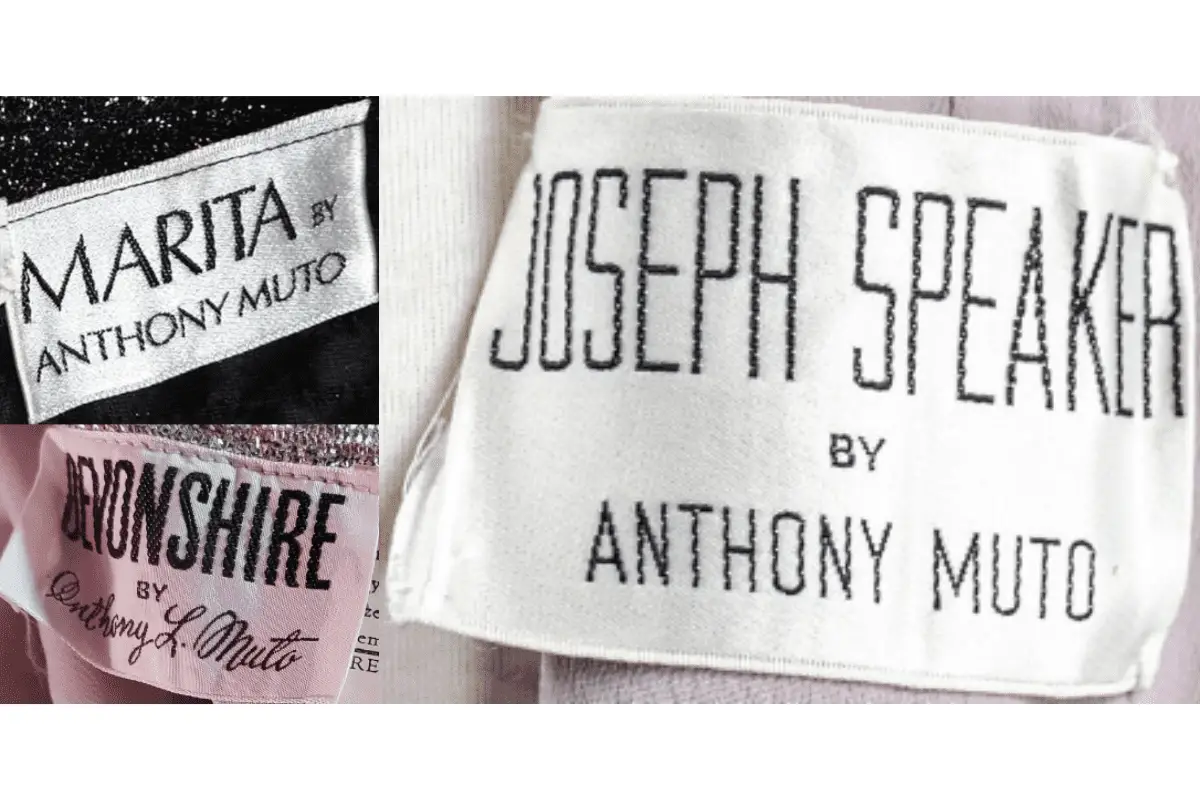
1960s Anthony Muto tags
1970s vintage Anthony Muto tags
- The “Anthony Muto A.M./P.M” label becomes a central identifier during this period.
- Tags often feature a box-like layout with “A.M./P.M” in a prominent, stylized font underneath the designer’s name.
- Labels also introduced a more stylized font for the name “Anthony Muto,” while maintaining a simple black-and-white color scheme.
- Occasional use of sub-labels like “Marita by Anthony Muto” shows the expansion of his lines.
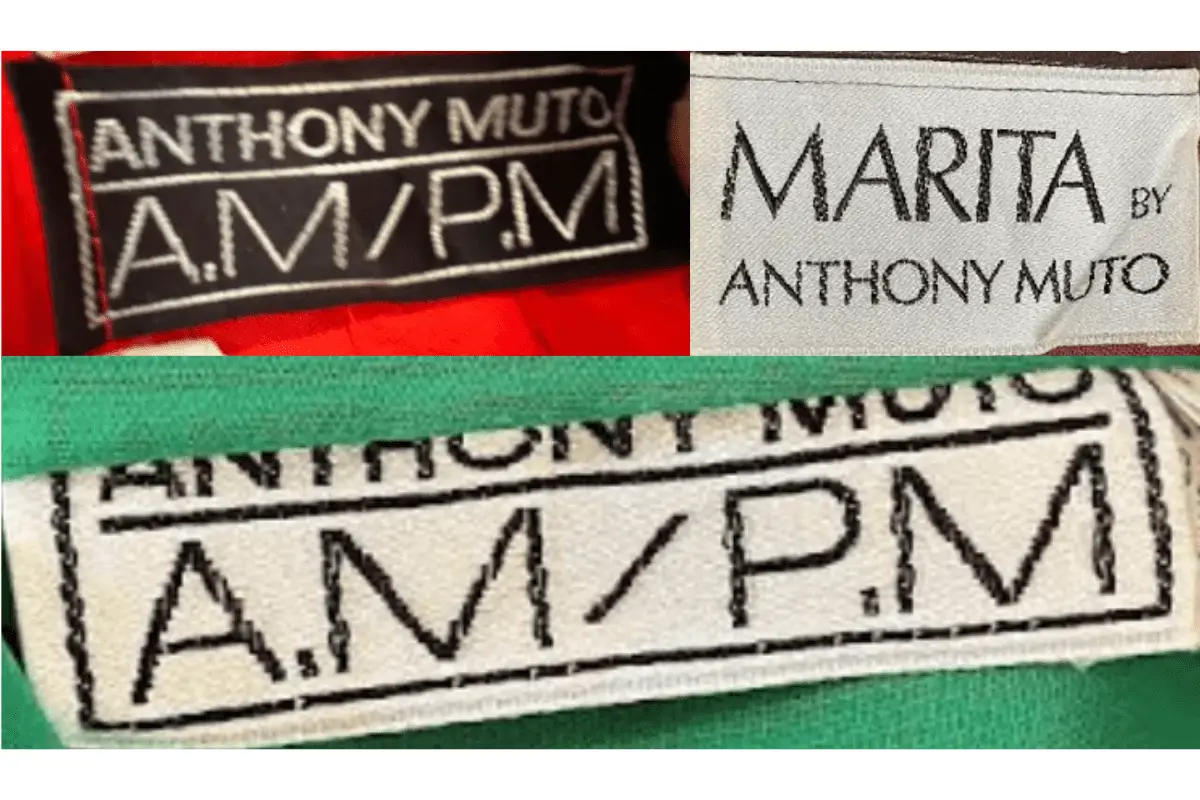
1970s Anthony Muto tags
1980s vintage Anthony Muto tags
- Continued use of “A.M./P.M” labels, but with more variation in the layout, including more detailed borders and sharper fonts.
- Introduction of collaborations or special collection names such as “Joseph Speaker by Anthony Muto” and “Devonshire by Anthony L. Muto” on the tags.
- The tags in this era become more refined and sophisticated, with greater use of satin fabrics for a more luxurious look.
- Tag designs were still monochromatic, often favoring white backgrounds with black lettering or vice versa.
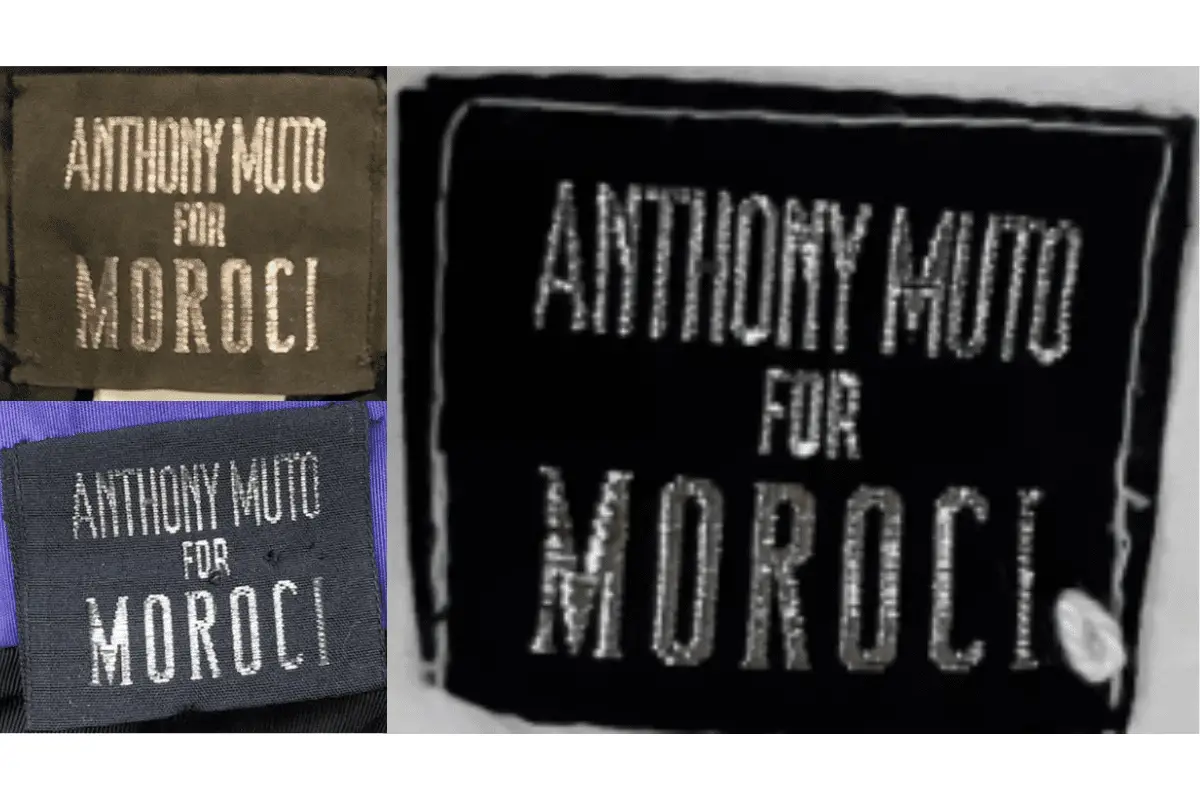
1980s Anthony Muto tags




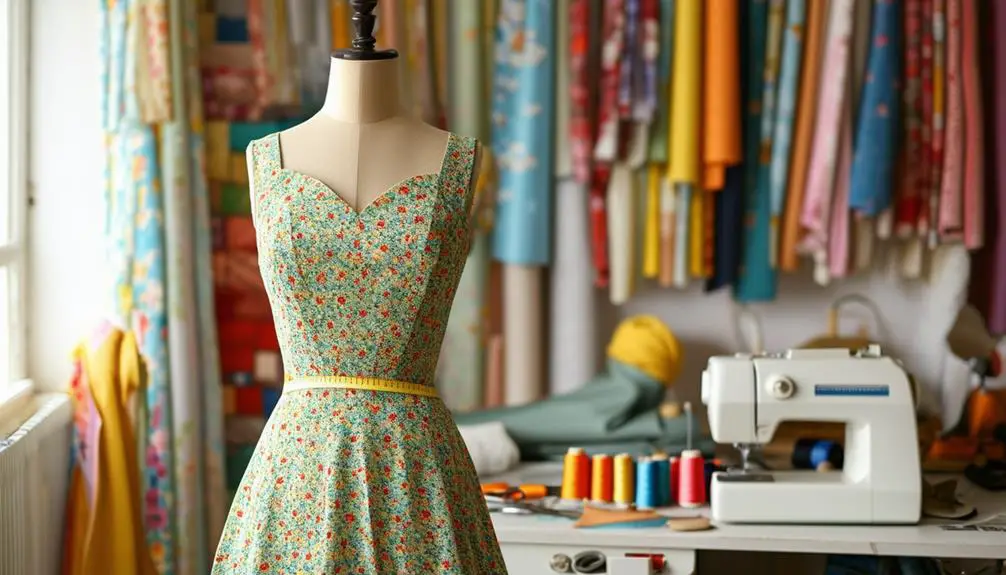
Your article helped me a lot, is there any more related content? Thanks!
Your article helped me a lot, is there any more related content? Thanks!
Thank you, your article surprised me, there is such an excellent point of view. Thank you for sharing, I learned a lot.
Thanks for sharing. I read many of your blog posts, cool, your blog is very good.